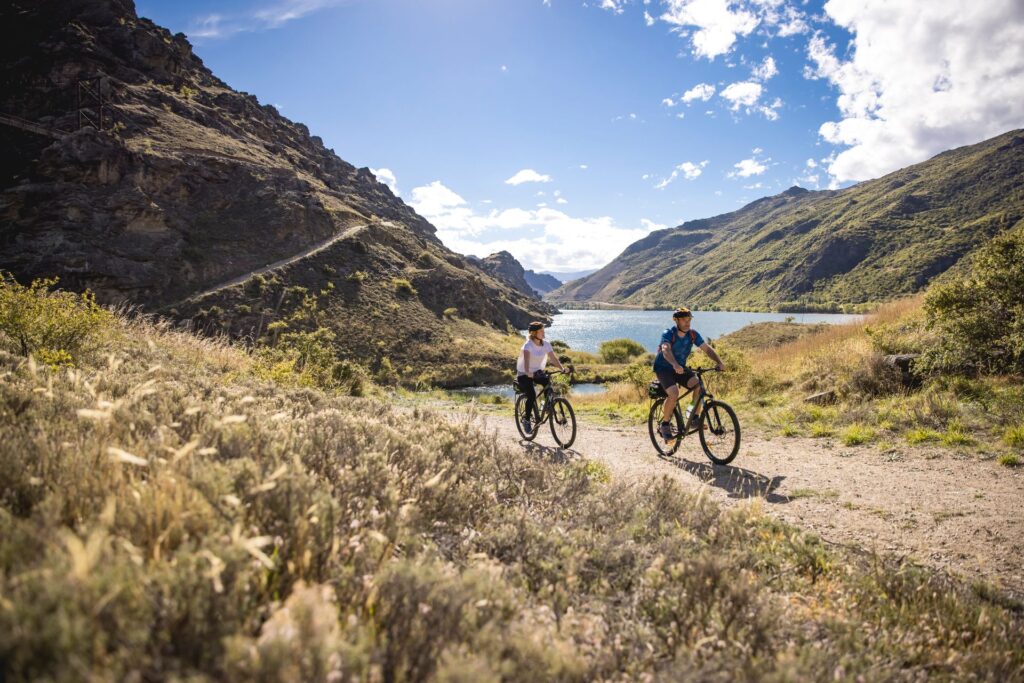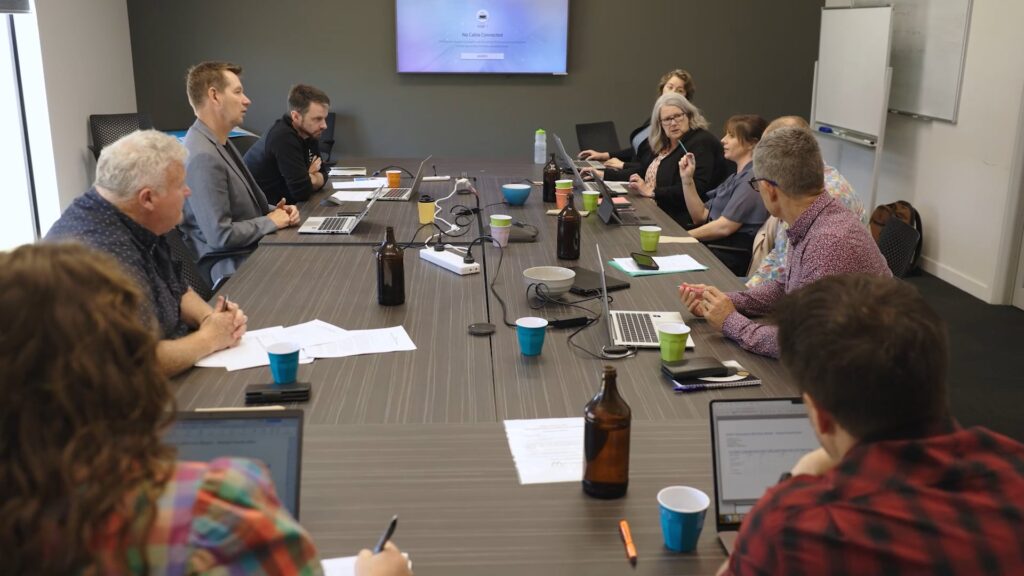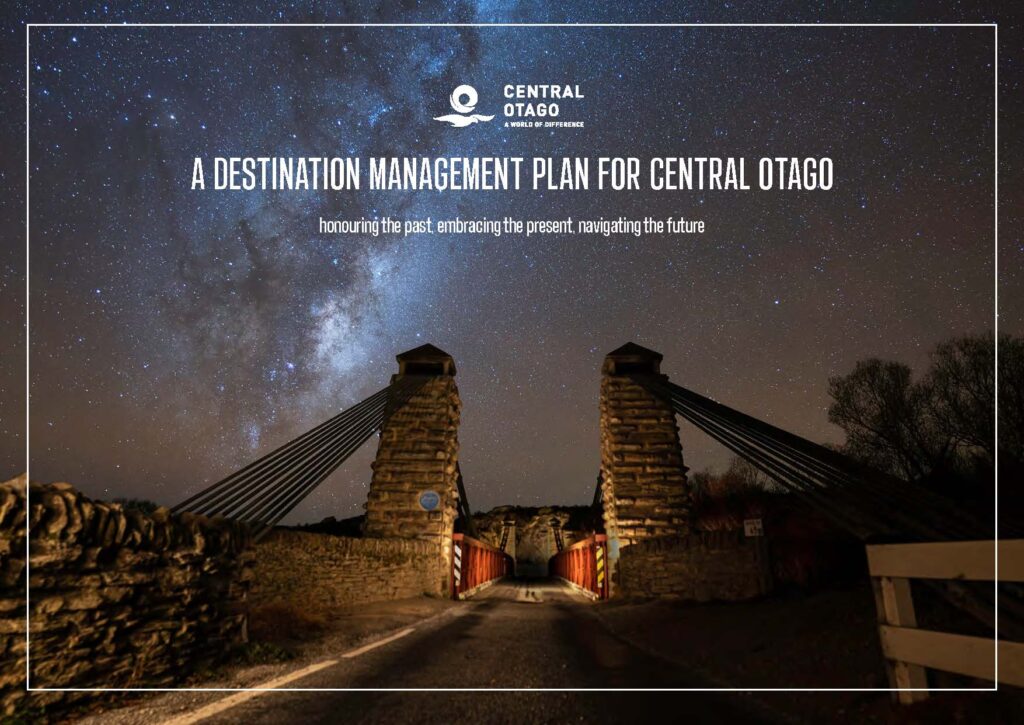THE VISION
“When visitors experience our world, sharing a moment with our people and our places, they become an extension of our community – loyal advocates and believers in our causes and our dreams for generations to come.”
Case Study Themes
Destination Management, Sustainability, Collaboration, Community.
Destination Website
Share
by the numbers:
The Difference a Plan can make
75% of residents now believe tourism “enriches daily life” in the district (Council Resident Opinion Survey, October 2024).
Visitor net promotor score ratings have increased 2 percentage points among recent visitors, and 11 percentage points among all previous visitors, since 2022.
16.2% increase in employment (year to March 2023).
13.3% increase in visitor spending (year to March 2023).
$282 million spent by visitors to Central Otago in the year to March 2024 (37% higher than before the Covid-19 pandemic).
Tourism Central Otago Case Study
Sustainable tourism approach driving positive results in Central Otago
It’s hard to know what the communities behind Central Otago’s famous cycleways and outdoor tourism experiences are most proud of these days.
Native tree plantings are bringing insect and birdlife back to riverside paddocks, new businesses are popping up in rural towns and the vast majority of the region’s residents are now reporting that they believe tourism enriches their lives.
These results, highlighted by the Central Otago District Council’s latest Resident Opinion Survey, are among a raft of positives emerging from the district’s sustainable approach to tourism and its work to fulfil the promise of its Destination Management Plan 2022.
Tourism Central Otago Head of Destination Anthony Longman says the 50-year plan has been guiding a shift in the way tourism development is done in the region.
Rather than focusing on solely on destination marketing, the council and its tourism arm are taking a broader stewardship approach to ensure future tourism development more holistically benefits the region’s people, culture, environment and economy.
Anthony says this is vital in a region known for its sun-drenched hills, rolling rivers, and wide-open spaces. Getting it wrong has the potential to risk the very things visitors come to Central Otago to experience.
He says finding the right approach for a place better known for solitude than hustle and bustle has required considerable community consultation. There have been surveys, countless interviews, and myriad workshops and discussion groups, all with the aim of creating a destination management plan the reflects the whole district’s aspiration for tourism now and in the future. Ultimately, the goal has been to create a vision and plan the whole community can believe in.
“The first 12 months of our destination management planning process was about really listening and going out into our communities to gather views and qualitative information.”
Two years on and Anthony is proud to point out that the results of the consultation and the new stewardship approach to tourism development are paying dividends.
The council’s most recent Resident Opinion Survey, published in October 2024, found 75% were now satisfied that visitors to the district “enriched the quality of life” for Central Otago residents.
The region’s ‘net promoter score’ – measuring the likelihood a visitor will recommend the region to others – has increased by 2 percentage points among recent visitors, and 11 percentage points among all previous visitors, compared to 2022 results.
Also positively, the sustainable approach to tourism hasn’t come at the expense of economic benefit. According to Infometrics’ most recent regional economic profile data, the year to March 2023 saw a 16.2% increase in employment in Central Otago’s tourism sector, and visitor spending was up by 13.3%.
“It’s been really good that there is a synergy between what our residents want to protect and what visitors come to see,” Anthony says.
Cycle trails – led by local communities
When people think of Central Otago, cycle trails often come to mind. New Zealand’s original great ride, the Otago Rail Trail, passes through the district, and the Roxburgh Gorge Trail, Lake Dunstan Trail and Clutha Gold Trail have sprung up in the past decade.
Anthony says their popularity brings opportunities, but also challenges that highlight the value of long-term planning. When the Lake Dunstan Trail opened in 2021, its business case projected 7,500 cyclists would ride it in its opening year. Instead, a whopping 84,000 came.
Anthony says educating trail users on how to act responsibly is vital when managing an influx of that many people in an area that hasn’t been busy in the past. Landholders providing access also need to be kept happy, trees need to be planted to reduce erosion and protect the environment, and infrastructure like parking and toilets needs to be regularly re-evaluated to ensure it meets demand.
Learnings like these were front of mind during development of the destination management plan in 2022. Positively, despite ongoing growth in popularity, the cycleways continue to be well supported by locals – a phenomenon Anthony attributes to the fact they have been community driven from the outset.
“The trails are all conceived, built and managed by community groups using public funds, so there’s always been real buy in.
“Each time we have worked with the communities involved to take the learnings from earlier cycleways and apply them to the new ones. We’re ahead of the game because the communities lead them, and that is something we will continue to do in future.”

Tourism Central Otago Operator Workshop Highlands 2024.
A Māori voice – the value of cultural storytelling
Another benefit of the destination management planning process has been greater appreciation of Central Otago’s Māori history, Anthony says.
“We were able to use the destination management plan to build a real connection with mana whenua, and throughout the process we unearthed a lot of our local Māori cultural narrative that hasn’t been shared before.”
The “overwhelming feedback” from residents, as well as tourism businesses, was that these Māori stories should be embraced and shared with visitors, so incorporating them into visitor experiences is now a priority.
Engagement with mana whenua was also one of the reasons Tourism Central Otago decided to take a 50-year approach in its planning for tourism development in the region.
“The mana whenua groups we spoke with were all talking long term,” he says.
“For them it wasn’t about being prescriptive and saying ‘we need large hotels and an international airport’ to be successful, it was about considering what our children and grandchildren would like, and working back from there.”

Lake Dunstan Trail, Central Otago.
Governance – the right people around the table
It may sound drier than a Central Otago summer, but Anthony says one of the secrets to their success has been sound governance.
Tourism Central Otago and Central Otago District Council have long had a destination advisory board, but its composition was changed for their destination planning process to provide more diversity and prioritise people with a clear affiliation with Central Otago.
As well as tourism industry experts and business owners, the advisory board now includes representatives from South Island iwi Kāi Tahu and an under-30 representative to provide a younger perspective. In 2025 the diversity of the board will be strengthened further with the addition of a Year 13 high school student to provide a voice of the next generation.
The advisory board helped guide Tourism Central Otago’s destination management process, meets four to five teams per year to provide oversight during the plan’s implementation,
The fact Tourism Central Otago sits within council helps when it comes to fostering a shared understanding of the destination management plan and working together to achieve it, Anthony says.
“Working within council makes it easy for us to talk to people in the environmental team, cultural team and other departments. Some people working at council might not have thought of their roles or functions as being involved in tourism, but many do have a role as council’s focus is to create great places to live which are also great places to visit. Our destination management approach helps people across council understand the ecosystem.”
As a result, seasonal fluctuations in visitor numbers are now better accounted for during waste management planning, and placemaking is being supported by updating signage in some areas to explain their Māori and European history and significance to visitors, for example.

Central Otago Destination Advisory Board.
The Southern Way – looking beyond Central Otago’s boundaries
Tourism Central Otago is also part of the Southern Way initiative, which promotes longer-stay, lower-impact travel across the eight regional tourism organisations’ areas in the lower South Island.
The parties involved have worked together to tell a shared story, while also partnering with Invercargill, Dunedin and Queenstown airports. The partnership aims to promote and facilitate visitors arriving at one airport and departing from another, after travelling far and wide across the lower South Island.
“One region does well when everyone else does well, so the idea is to get people to slow down and spend more time enjoying the journey, contributing more meaningfully to each destination and community they visit,” Anthony says.
“If people just buy a pie or use a toilet when travelling through your region, that’s not really adding value and they don’t really get an appreciation of what your region is about.”
Anthony says the idea was inspired by the late Graham Budd, former Chief Executive of Destination Queenstown, as well as the ‘Grand Tour’ approach developed in Switzerland, which focuses on low-impact, longer-stay, and multi-region tourism.
He says the approach makes good sense in the lower South Island, given the relatively large distances between towns and the fact many cycleways traverse areas overseen by different regional tourism organisations.
“Visitors don’t see regional boundaries. By sharing ideas and working together, we reduce duplication of effort.”
Next steps
Anthony says Tourism Central Otago is pleased with its progress so far, but when you are working towards a 50-year strategy, there’s always going to be plenty more to do.
“We want to make sure we think long term in everything we do. It’s about creating a place locals love, and being proud to share that with people who want to come and experience that too.”
“Taking a long term, multi-generation destination stewardship approach is the right thing to do and I’m truly excited about a future for tourism in our region that puts our people and the environment at its heart.”


